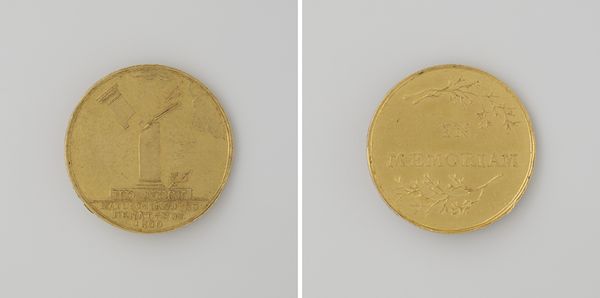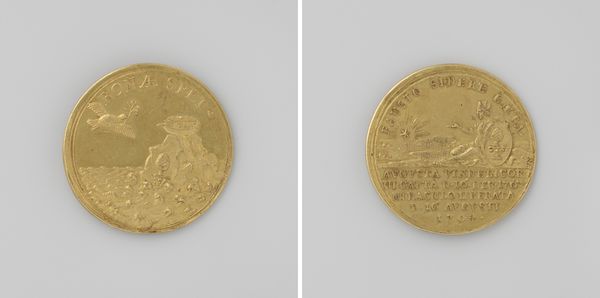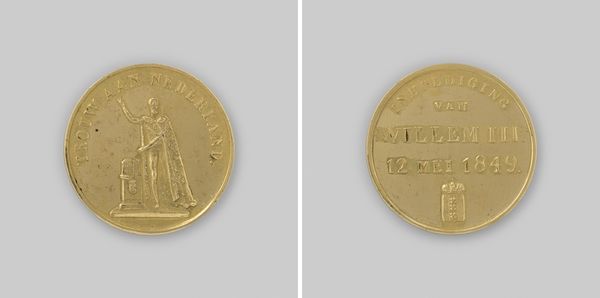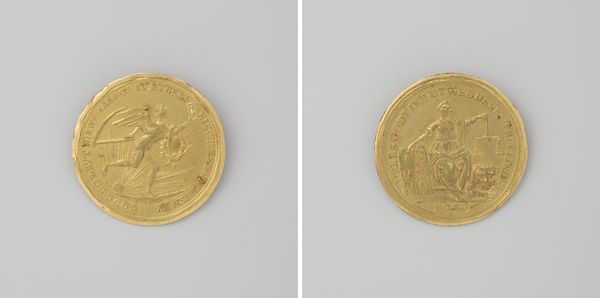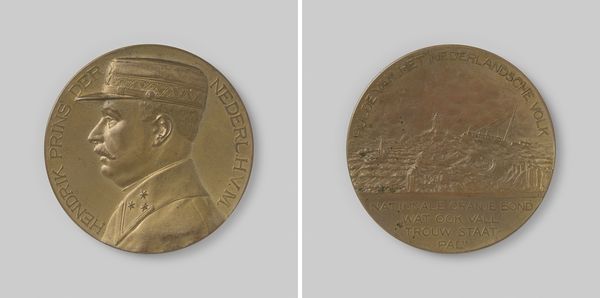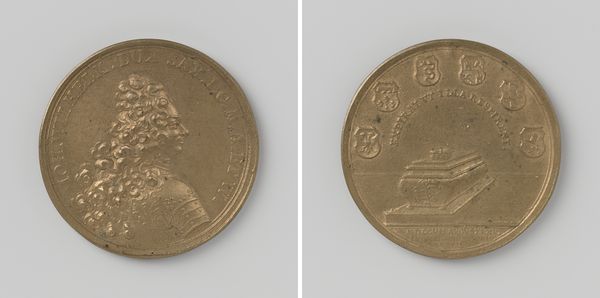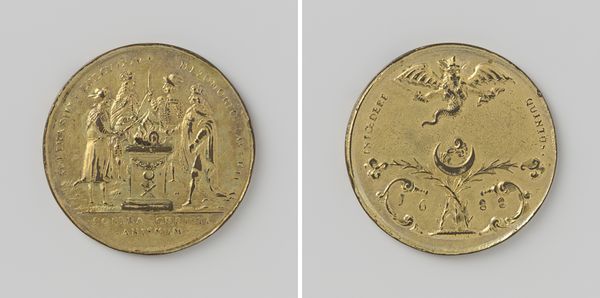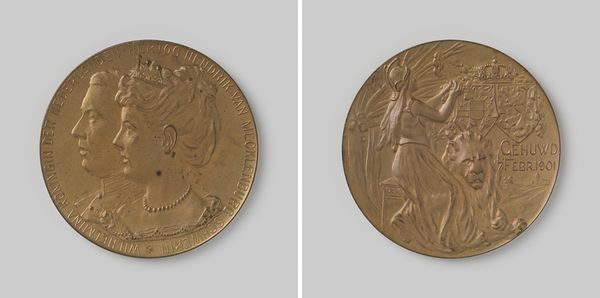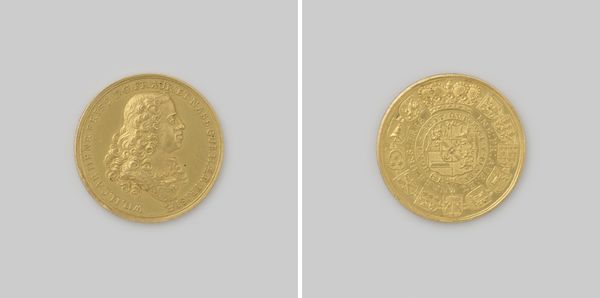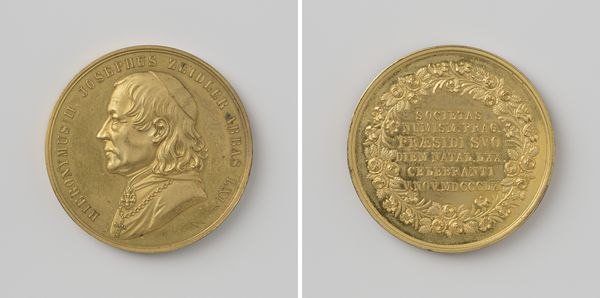
Wet op de spoorwegen en inwijding van de lijn Brussel-Mechelen, ter ere van Leopold I, koning der Belgen 1835
0:00
0:00
relief, bronze, sculpture
#
portrait
#
neoclacissism
#
relief
#
bronze
#
sculpture
#
ceramic
#
history-painting
Dimensions: diameter 5 cm, weight 62.10 gr
Copyright: Rijks Museum: Open Domain
Curator: Here we have a bronze relief by Joseph-Pierre Braemt created in 1835. Its title, "Wet op de spoorwegen en inwijding van de lijn Brussel-Mechelen, ter ere van Leopold I, koning der Belgen," tells us it commemorates the Belgian railway act and the opening of the Brussels-Mechelen line. Quite a mouthful! Editor: My eye is immediately drawn to the two very different sides—the solemn portrait of Leopold I contrasted with that allegorical scene on the reverse. There's a formality to the profile and a romantic idealism in the depiction of technology, don't you think? Curator: Indeed. The profile echoes classical portraiture conventions. Leopold's likeness is crisp, authoritative, fitting the Neoclassical style then favored for official depictions of leaders. The text inscribed is “Leopold Premier Roi Des Belges.” It's a piece of national branding as much as art. Editor: And that figure on the other side—the one presiding over a primitive train, almost seems like a goddess or personification of Belgium. Notice the factory smokestacks in the background; she's clearly an allegorical figure representing industry, modernity, and progress. Even the light feels symbolic of the hope tied to industrialization. Curator: Precisely. The industrial revolution brought profound social and economic shifts, and it changed the visual and symbolic language, even on official works of art. We are witnessing here a turning point in social and visual imagery; an assertion of Belgium as a modern state. Editor: What I find compelling is how Braemt uses imagery of classical art forms, of idealized beauty, and integrates it with these burgeoning symbols of the Industrial Age. There’s something quite striking in the meeting of those two sets of visual ideas. Curator: It speaks to a broader historical trend. Newly formed nation-states embraced technological innovation and sought to align them with historical precedents, framing advancements as extensions of grand historical narratives. Consider the placement of classical icons into scenes of modern transport as propaganda—these all help forge a national identity, to reinforce collective pride and allegiance to the king. Editor: The coin certainly is a fascinating material artifact that is loaded with political and cultural meaning. It’s a fascinating glimpse into how a nation defines itself at a key moment of change. Curator: Indeed. Studying the political imagery is as vital as viewing this work as sculpture.
Comments
No comments
Be the first to comment and join the conversation on the ultimate creative platform.
